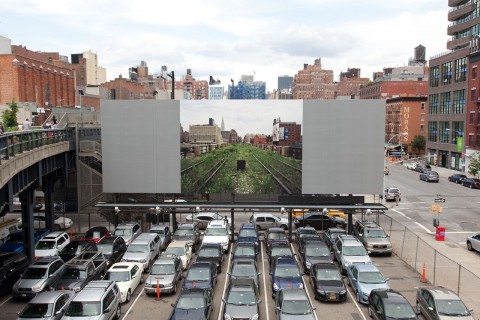“After-Effects of the High Line” was held on Oct. 24 in Cooper Square at NYU. Throughout the evening, urban scholars and social theorists engaged with questions of hyper-gentrification surrounding one of New York City’s most modern landmarks. The self-moderated panel discussion featured brief presentations by the University of Oregon’s Christoph Lindner, Queens College/CUNY Graduate Center’s Brian Rosa and Queensborough Community College’s Julia Rothenberg before fielding audience questions and debate. Each offered invigorating insight into qualities of a place often perceived simply, as a pleasant public good.
Lindner opened the evening by noting that the public and academic response to the High Line has been generally celebratory. From tourist site ratings to environmental and economic development groups, the High Line has been lauded as an exceptional example of infrastructural reuse. However, Lindner and Rosa’s co-edited book, Deconstructing the High Line: Postindustrial Urbanism and the Rise of the Elevated Park, encourages a more critical engagement with the space. The Tuesday evening event, Lindner said, was about “bringing together a group of people to be difficult about the High Line.”
Lindner’s talk focused on the park as “a deliberate site of slowness.” (At the University of Oregon, he is now pioneering SLOW LAB, which “takes a special interest in the relationship between velocity and issues of inequality, precarity, and environmental change”). The High Line, Lindner said, is interesting in the way it produces its own view and then continues to reproduce it, as such a site promotes its surrounding neighborhood’s growth and development. However, he also touched on this being a process of hyper-gentrification in Chelsea: as the “super-rich push out the rich who pushed out the rest.” He thus questioned whether the High Line pushes the realms of narcissistic design or “design delirium.”
Rothenberg followed up this debate, making note of the so-called “High Line effect” we see as projects inspired by the site pop up in new areas around New York and other global cities. The High Line, she said, has become an “ideal type” of post-industrial reuse—a “copycat strategy” for works of the same type. She also noted that critics of neoliberalism see through the “for-the-public” discourse that permeates many of these projects, as a deep contradiction appears between their position as growth machines for capital accumulation and for real community needs. How can these “high lines” remain sensitive to issues of social sustainability, balancing the goals of private investors and resistors to gentrification?
Before fielding audience debate, Rosa closed the panel by reading this “High Line effect” through space and time in British cities, tracing back to 19th century infrastructural reuse and improvement projects. “How do we treat these spaces left over, beneath, or alongside infrastructure?” he asked, concentrating on the spaces surrounding remaining elevated subways in New York. Rosa noted that High Line is “no longer a proper noun,” and that this phenomenon of new projects with similar typologies popping up worldwide is not necessarily new, but today come with new limits and social questions.
Together, the panelists’ observations and provocations accomplished Lindner’s initial aim of fostering “difficulty” about the High Line. Examining such public spaces and which part of our “public” they serve is key to maintaining cities as democratic as they claim to be.

